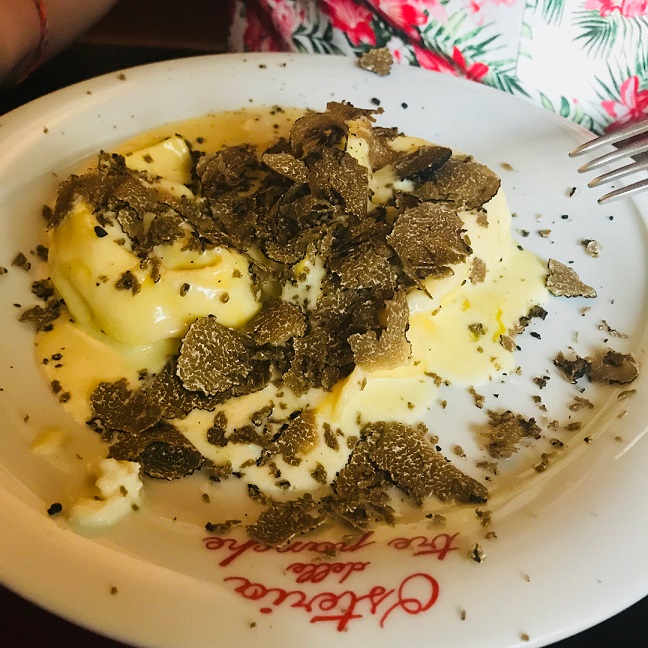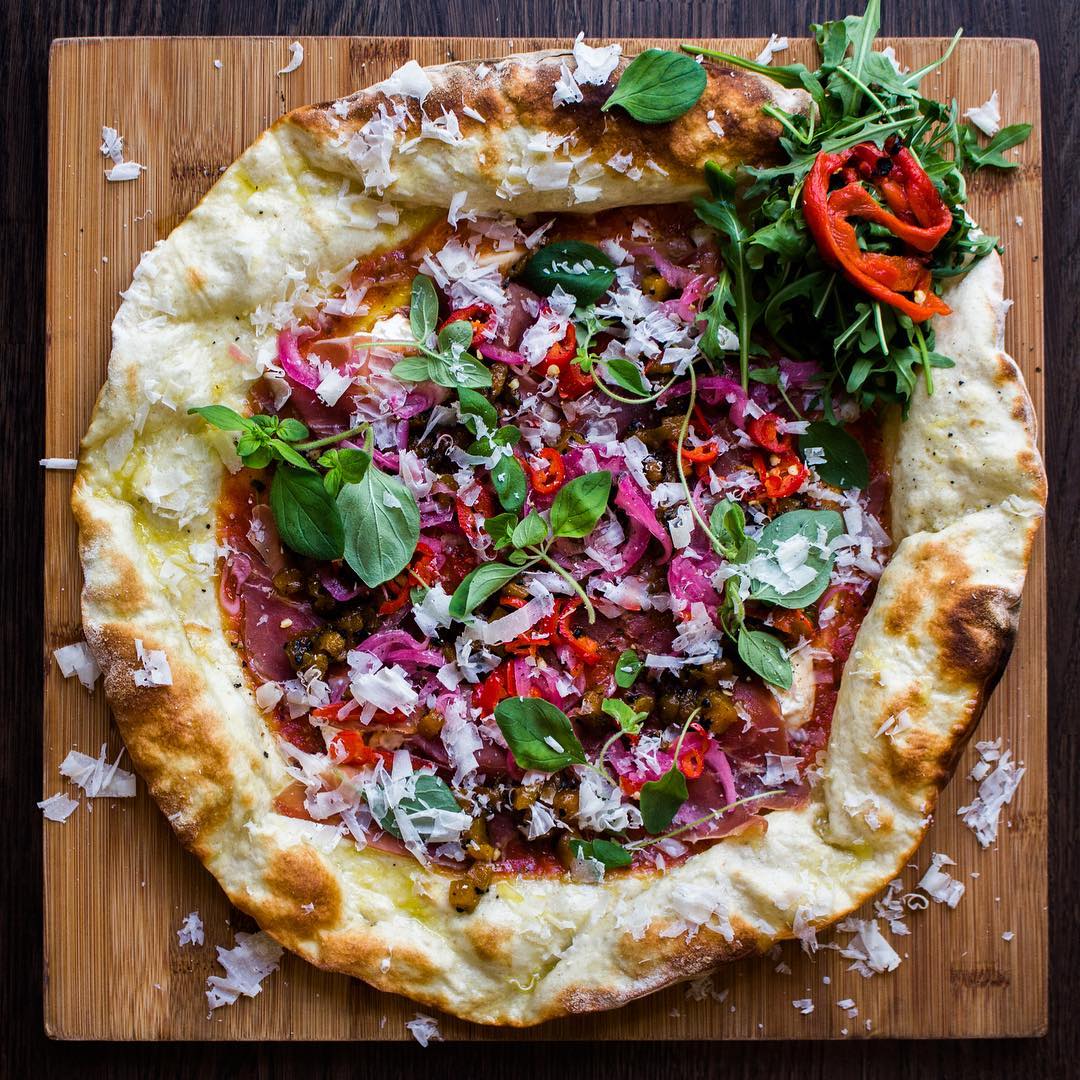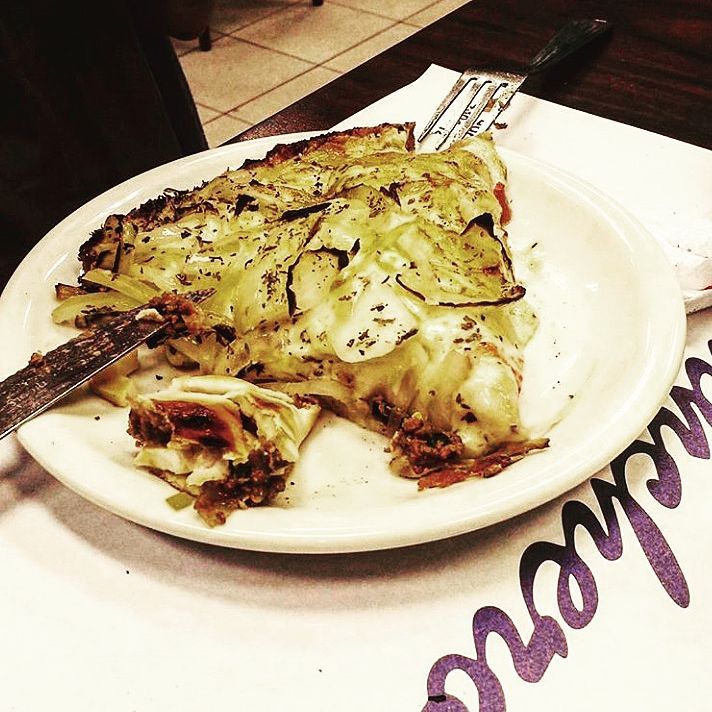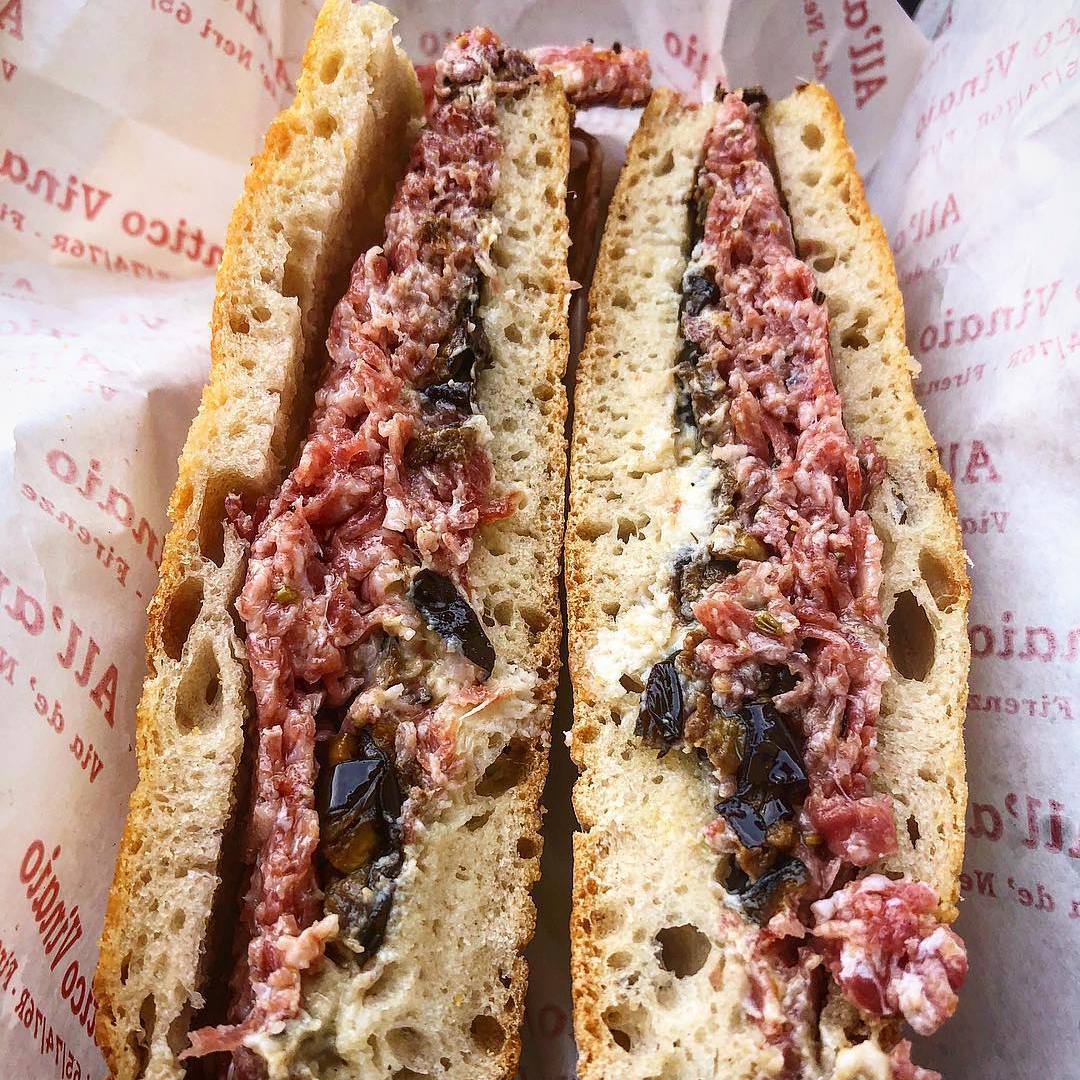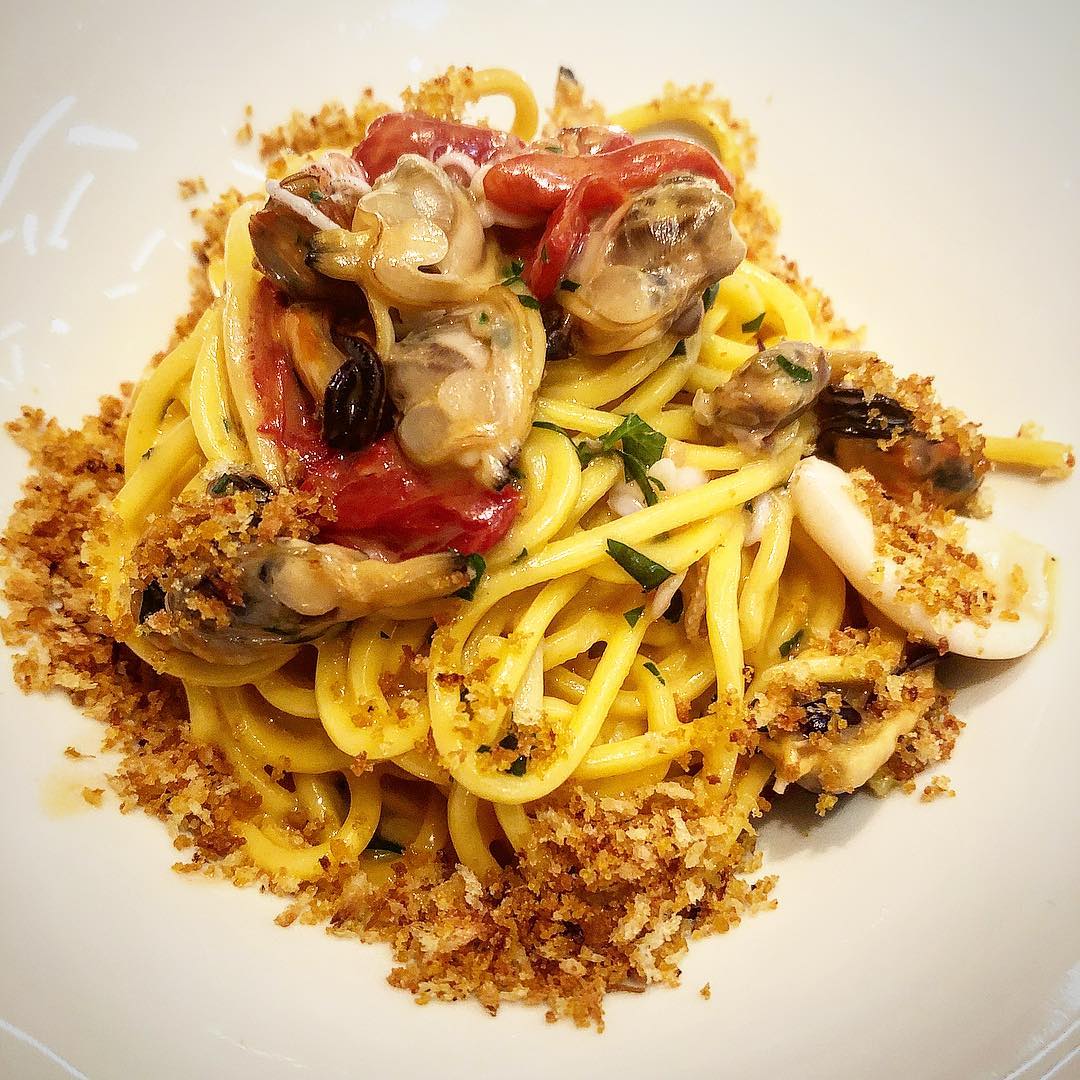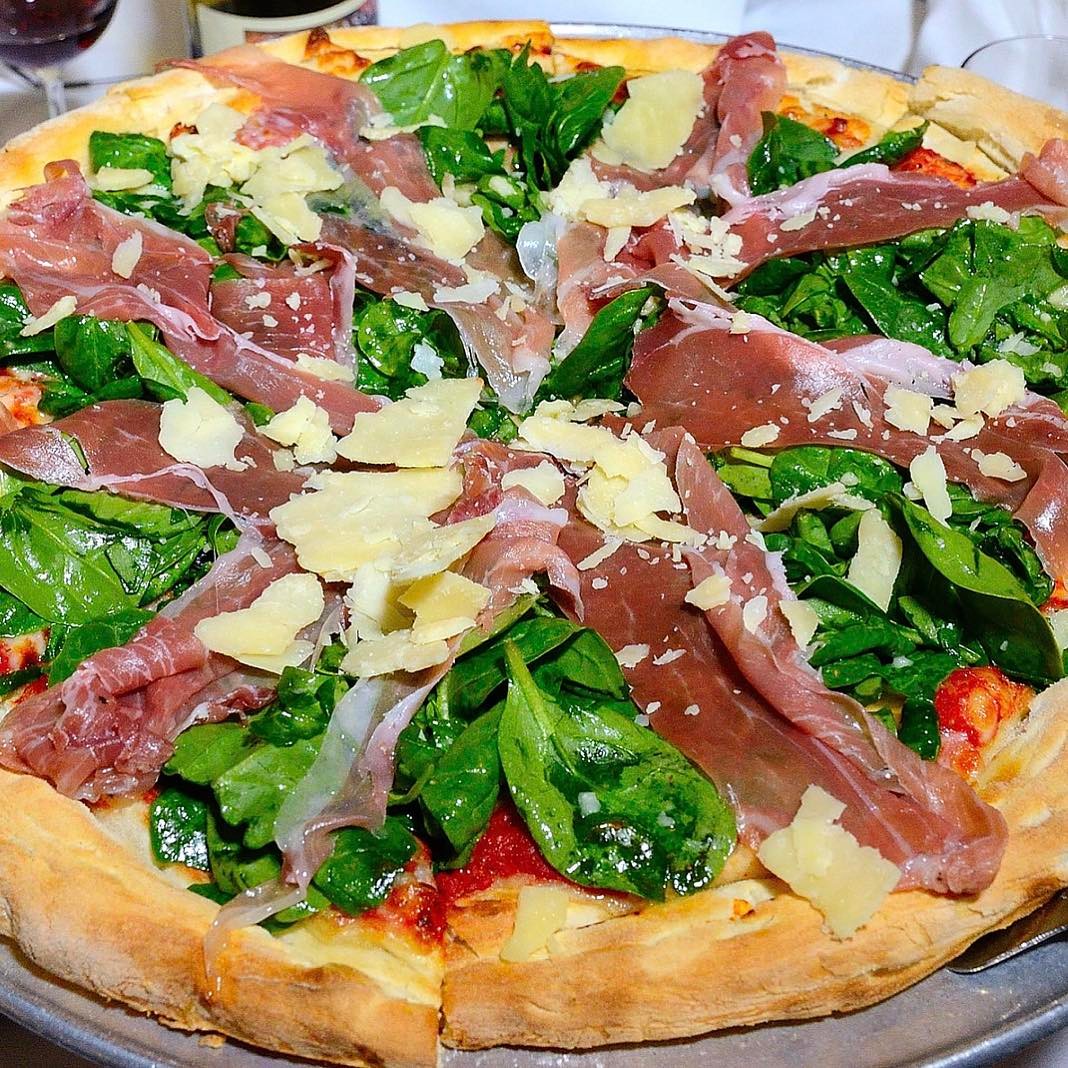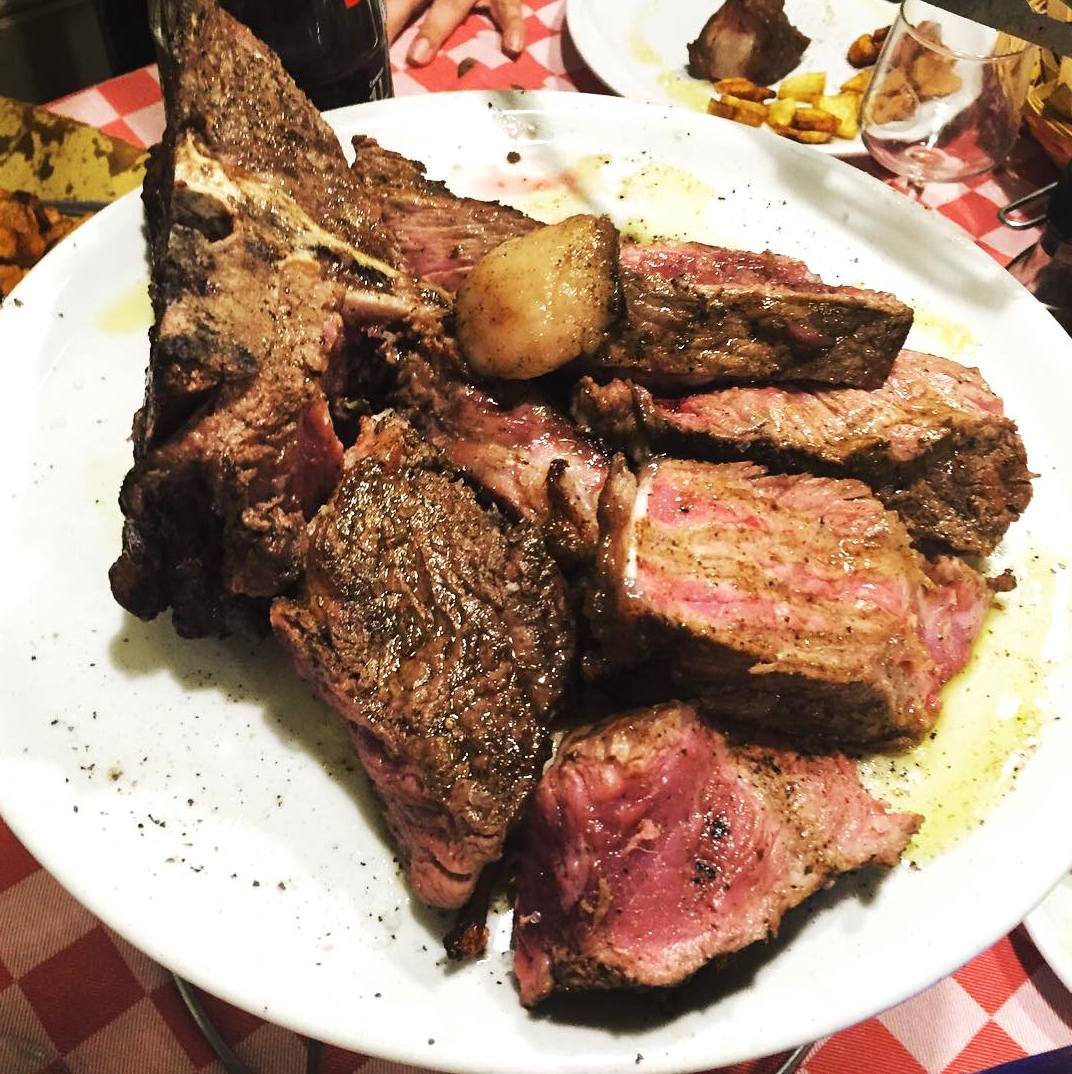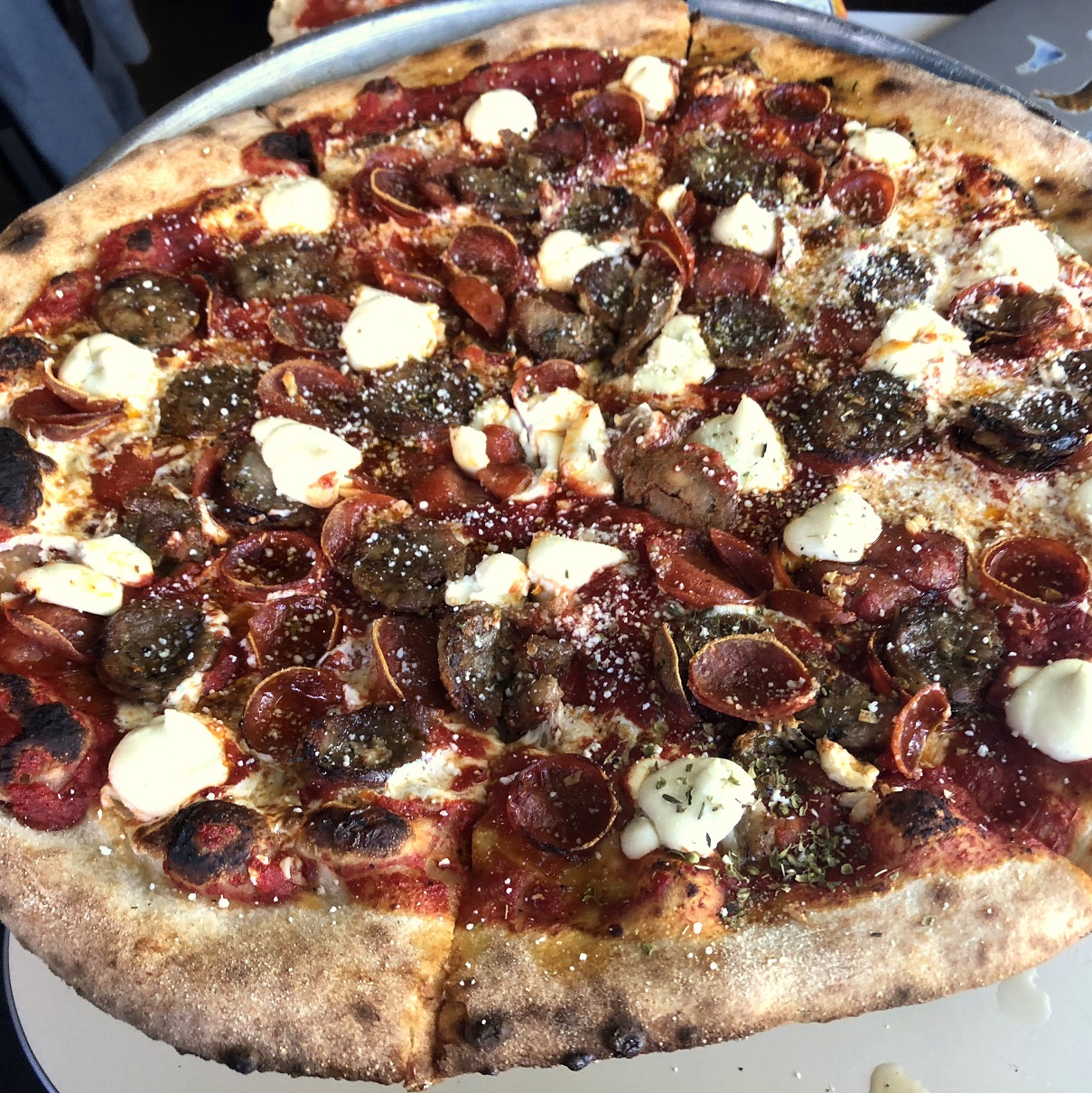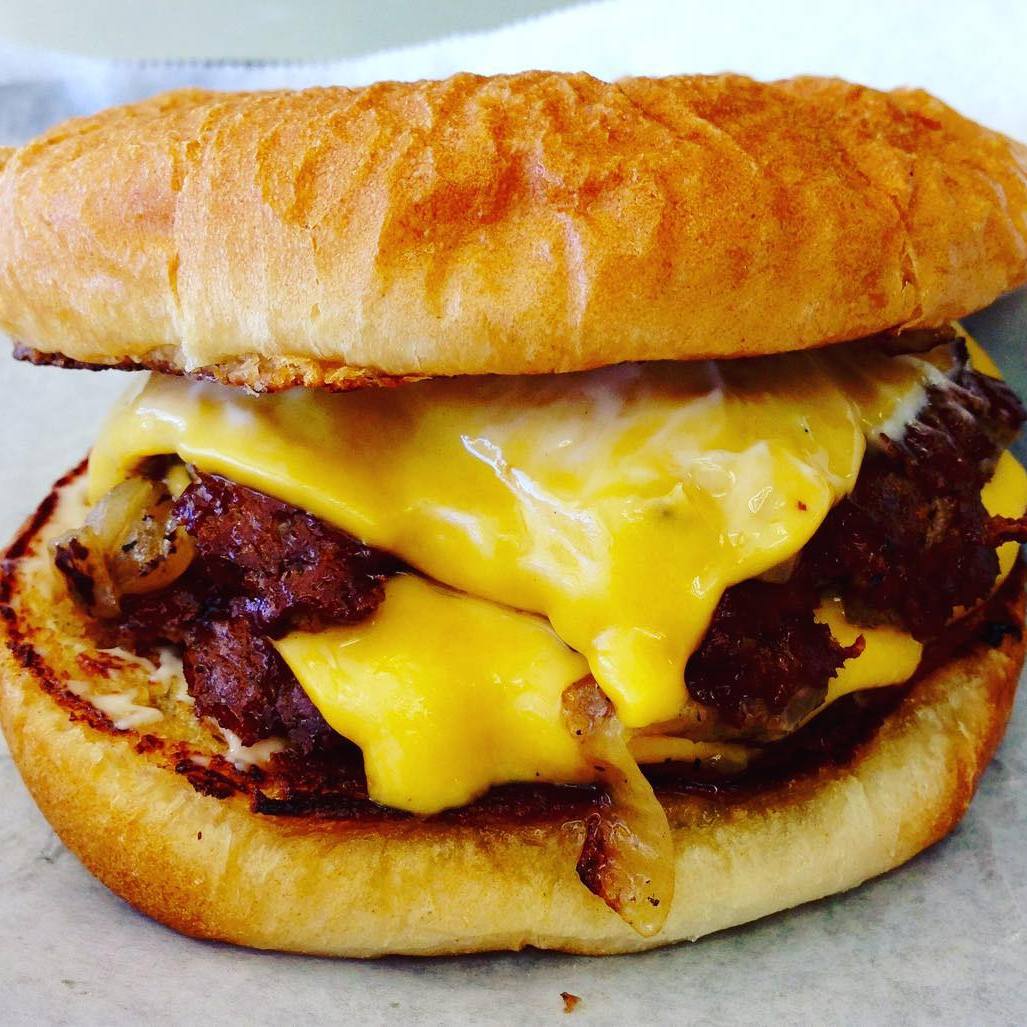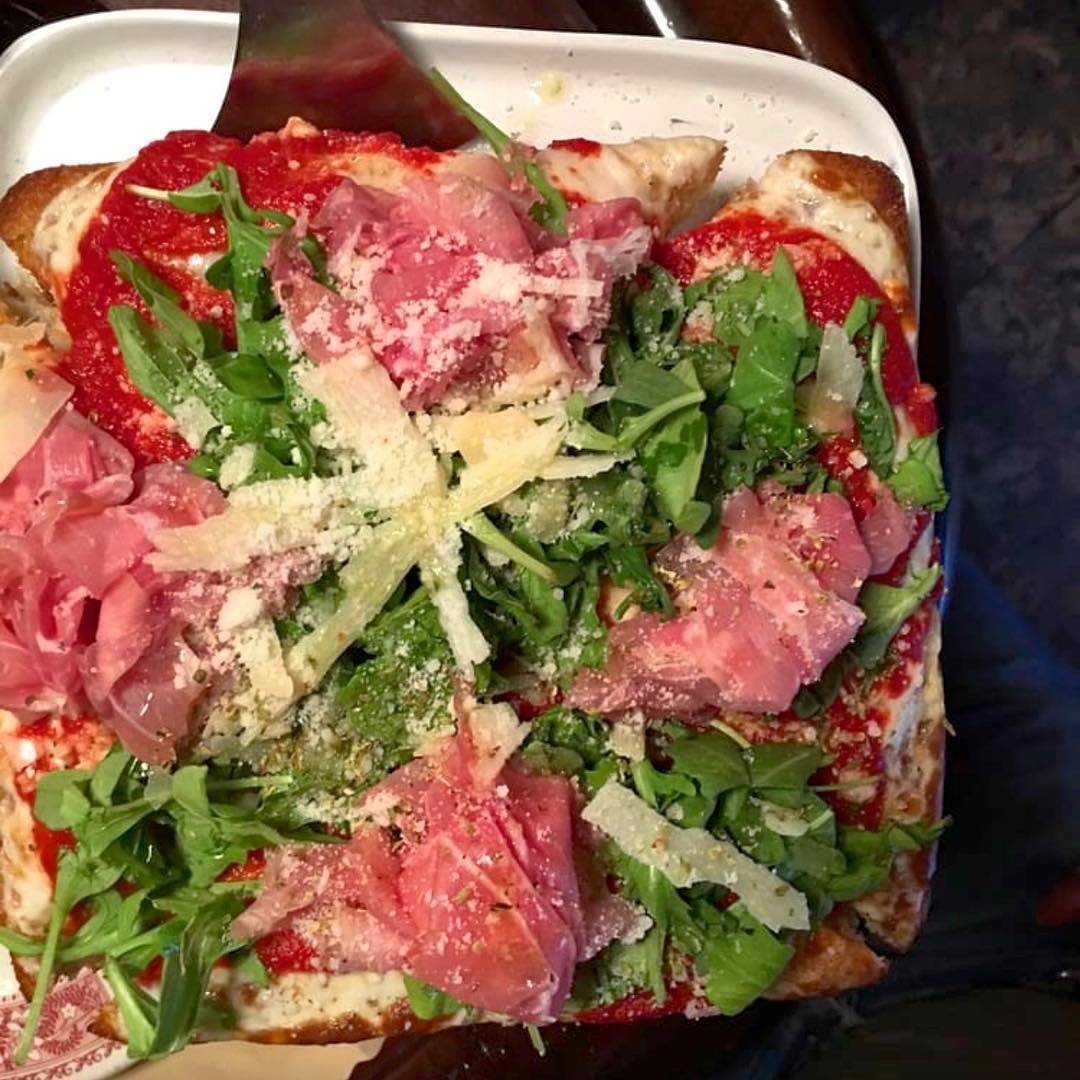The cutest trattoria in Florence features three tables with – you guessed it – three planks. The place is tiny but that is what makes it so cute. They also specialise in local truffles from Florence called "Oro del Bosco" which are available in either black or white around the year depending on the season. Try them with the overstuffed ricotta ravioli or on the deep fried mozzarella. A treasure in Florence.
David Chang put Pizzeria Baest on the map but the revelation in Copenhagen is Neighbourhood. They pay tribute to the legendary crispy, organic pizza from Story Deli London with a significant twist. While Story achieves their ethereal light crusts from edge to edge - Neighbourhood manages to attach a chewy crust to the insanely thin and brittle crusts. Magic.
Augustin Banchero immigrated from Genoa in 1893 to Buenos Aires to open a bakery in "La Boca" called Richuelo with his son Juan. Here it is believed the legendary Fugazetta was invented as a derivative of the famous Genovese focaccia. The story goes that Juan cut an onion focaccia in half and added cheese because he thought it was too dry. Banchero is a cornerstone of world pizza history.
This is the most famous Panini in Florence with lines that can stretch to an hour. The wait is well worth it with the “favorita” and the Inferno featuring porchetta and spicy sauce as well as the amazing fennel salami which they grind up with pecorino cream etc. The bread and Focaccia are delicious. The most famous sandwich is Favoloso made with fennel salami, pecorino and artichoke creams and grilled eggplant.
Travel back in time to a more elegant age and enjoy fine dining in a grand style. The dining rooms are opulent with loads of tradition combined with random bursts of modernity. The prices are eye-watering with $80 appetisers galore. By comparison, the $270 tasting menu almost seems like a bargain. The astonishing wine cellar is one of the most comprehensive in the world with vertigo inducing markups. Indeed the image of Pinichiori is so entrenched that most Italians will dismiss the restaurant with disdain saying it is only for rich tourists even though they themselves have never been there. The food, however, is terrific. The signature chitarra pasta with seafood, bottarga and crunchy bread crumbs is historic.
Home to San Francisco's oldest and most beloved wood-fired pizza oven, the Cantalupo family opened this legendary North Beach restaurant in 1935. Originally called Lupo's, the restaurant introduced the first wood-fired brick pizza oven on the West Coast. Immigrants from Naples, the owners’ pizza and Neapolitan dishes were based on closely guarded family recipes. As word began to spread, lines stretched out the door. Celebrity fans through the years include Bob Hope, Robert Duvall, Andy Garcia and George Lucas. Two famous restaurateurs, Alice Waters and Wolfgang Puck, modelled their restaurants’ brick pizza ovens on Tommaso's. Today, the Crotti family carries on the tradition of scouring the markets for fresh seafood and vegetables, serving great wood-fired brick oven pizza and dishing sumptuous Italian food.
Pro tip: Tommaso's does not accept reservations.
An hour northeast of Florence lies Italy’s best Bistecca Alla Fiorentina and one of the world’s greatest steakhouses. Set in the Tuscan countryside at grill master’s Paolo’s modest house, you dine on his simple but gorgeous patio. Plates of Italian “tapas” come out in waves. They are deceptively simple and it may not be until later that you realize just how perfect they are. Then comes the beef, so tender you can cut it with a spoon. Other steakhouses lie and say they serve Chianina beef, which is not true because there are not enough of the cattle or they import beef from Spain. Here, the number of tables is highly limited, which allows Nandone to source local Limousine breeds that are simply unmatched. Four generations have ensured this remains a world heritage site for beef.
Tony Gemignani came to fame through his acrobatic pizza twirling skills and was the first non-Italian to win the World Pizza Championships in 2007 in Naples, Italy. He went on to win numerous awards in the USA and Internationally. It was perhaps his destiny to open one of the most extraordinary pizzerias in the world. Tony's is a pizza wonderland in that he has faithfully recreated most of the major regional pizza styles from Italy and across the USA utilizing 7 different pizza ovens, authentic recipes and correctly sourced ingredients. It is the only place in the world that you can compare a Naples wood-fired pizza with a New York coal-fired pizza with 1/2 dozen other pizza styles in between. Oh - and - if you are a fan of Chicago style pizza? He has built a dedicated Chicago pizza temple nearby called Capo with all of the Chicago deep dish classics as well as his unique, four oven pizza. Tony is a living legend.
The Friendly is a pizza parlour that offers New York-style pizza and a very much buzzed about flat top burger, which many locals proclaim as the best burger in San Diego. This no-frills burger tastes how a cheeseburger should taste. By cooking on the flat top griddle, the burger patties develop a crispy crust over the meat, locking in moisture and ensuring each bite contains some of that burger crust. The cheese, while nothing extraordinary, blends seamlessly with the patties. Be warned: Halfway through devouring the burger, the grease had soaked through the bottom bun.
Tony Gemignani is a 12-time World Pizza Champion. In November 2012, he opened Capo's, a Chicago-style pizza and whiskey bar two blocks from Tony's Pizza Napoletana in San Francisco's North Beach neighbourhood. Designed to feel like a prohibition-era speakeasy, the restaurant specializes in Southern Italian dishes and four styles of Chicago-style pizza: deep dish, stuffed, cast iron pan, and cracker thin. His speciality is the world-famous Quattro Forni, a thick, square-cut pizza. The dough is baked, then fried, topped with mozzarella, tomato sauce, chopped garlic, and soppressatapicante; then baked twice more, the finish in a wood-fired oven. Topped with arugula, Calabrian chiles, a drizzle of hot pepper oil, oregano and shaved Parmigiano-Reggiano, this masterpiece is the ultimate crisp and savoury bite. No wonder orders are limited to 10 per day.


